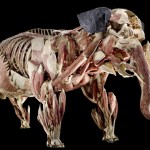
Tuberculosis usually attacks the lungs, but can affect other parts of a patient’s body. Image: Shutterstock
The E-Nose could detect lung cancer, pneumonia and other pulmonary diseases by sniffing a patient’s breath.
Tuberculosis (TB) is a contagious bacterial infection that spreads through the air. It has mostly been eliminated from the developed world, but kills 1.7 million people a year in developing nations, including India.
A hand-held device, the Electronic Nose, is being developed by scientists from the International Centre for Genetic Engineering and Biotechnology in New Delhi, India, and Next Dimension Technologies in California, US. It has the potential to immediately diagnose this disease and others from “˜sniffing’ a patient’s breath, rather than using the current time-consuming sputum tests.
“We hope to take the concept of the Electronic Nose to the next level by developing and testing a prototype of the hand-held, battery-powered device,” said lead researchers Professor Virander Chauhan and Dr Ranjan Nanda.
“Our goal is to make the Electronic Nose widely available in poor, remote areas where tuberculosis often breeds and spreads, devastating so many lives.”
The theory behind the device is that biomarkers in the breath can indicate the presence of TB and lead to earlier diagnosis. The scientists from New Delhi are tracking these biomarkers using sensors developed in California.
It is estimated that the Nose could save 400,000 lives a year through earlier diagnosis, which would in turn lead to improved treatment and reduced risk of transmission. The scientists have also suggested that Electronic Noses could be developed to detect lung cancer and pneumonia biomarkers.
Earlier this week, the scientists received funding from the Grand Challenges Canada and the Bill & Melinda Gates Foundation to further test and develop the Electronic Nose. Dr. Peter Singer, CEO of Grand Challenges Canada, said the discovery is a testimony to the power of innovation to save lives.
“Diagnosing TB and other pulmonary disease simply by testing a patient’s breath is a bold idea with potentially big impact.”
The next step is to determine whether the device can detect the biomarkers from the patient’s breath immediately and using non-invasive methods- hence the sniffing.
“Grand Challenges Explorations aims to tackle critical health and development challenges by funding creative, high-risk concepts that show the greatest potential for impact,” said Chris Wilson, Director of Global Health Discovery at the Bill & Melinda Gates Foundation. “With this additional phase of funding, we’re excited to move the most promising projects closer to products that could ultimately save millions of lives.”
Source: Grand Challenges Canada






